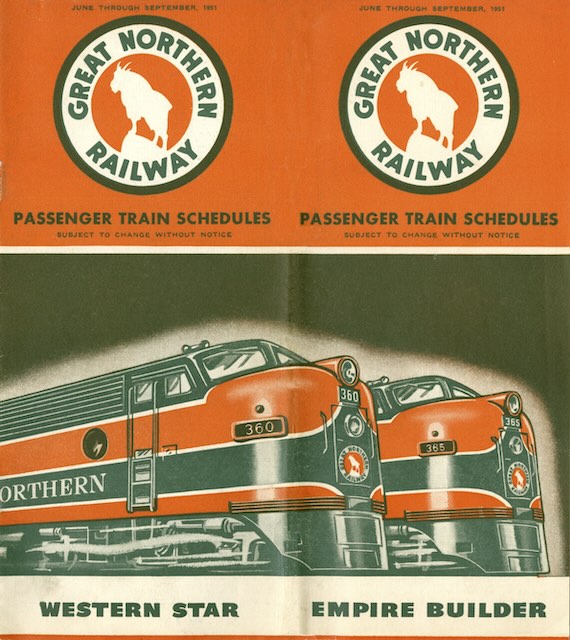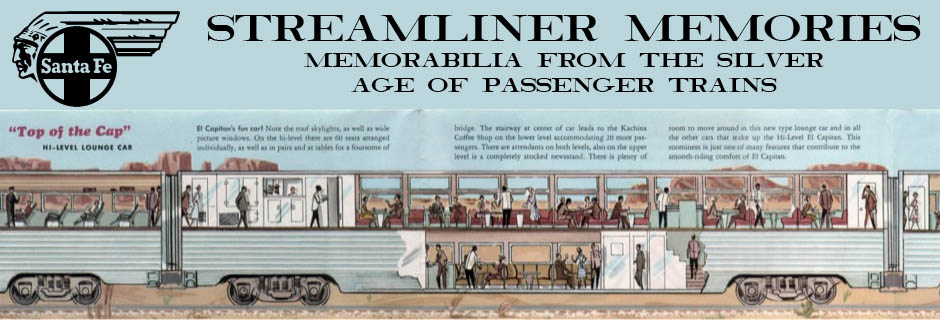This timetable introduces two new trains: the Mid-Century Empire Builder, which used completely new equipment, and the Western Star, which was a new name for the equipment from the 1947 streamlined Empire Builder. It is hard to know which was bigger news: that the Great Northern had completely re-equipped its premiere train or that it now had two streamliners each as good as or better than the Milwaukee Road’s Olympian Hiawatha and both better than Northern Pacific’s North Coast Limited.
 Click image to download a 28.6-MB PDF of this 44-page timetable.
Click image to download a 28.6-MB PDF of this 44-page timetable.
The back cover ad on this timetable closely resembles one of the panels on a 1953 brochure advertising Two Great Trains. Some passengers might have been puzzled that the back cover ad calls the Empire Builder “new” when it was an old name while it doesn’t apply that word to the Western Star, which was an entirely new name.
This was also the first timetable to show two F units on the front cover. As noted here a couple of months ago, the immediately previous timetables had an E unit side-by-side with an F unit as GN continued to use E units for the Empire Builder but substituted F units for its secondary train. As of mid-1951, GN gave up on E units entirely for trains going over the mountains.
Although both trains were streamlined, the Empire Builder went from Chicago to Seattle in 45 hours while the Western Star required 58-1/4 hours. This is partly because the latter train made more stops but also because it took a slightly longer route via Grand Forks, which added about 3-1/2 hours to the journey.
In 1952, Great Northern would send the Star on another detour, routing the train through Great Falls. This took 4-1/6 hours longer than the more direct route through Chester. But the railroad made up for this elsewhere so the total time for the Chicago-Seattle trip remained the same as in 1951. GN probably could have tightened up the Star‘s schedule even more, but as it was the train left Chicago shortly before midnight and arrived in Seattle shortly after dawn, so a shorter schedule would have been inconvenient for travelers at one end or the other.
One of the implications of this longer schedule was that GN was able to offer at least one westbound train in daytime service on the east end of its line but not the west end. In particular, both trains went through Ephrata, Wenatchee, and Skykomish between midnight and 6 am. Eastbound, pretty much every city along the line enjoyed service at decent hours by one train or the other if not both.
The timetable also shows the Western Star going all the way to and from Chicago rather than merely connecting with a Burlington train in St. Paul. In fact, a look at Burlington’s 1950s timetables reveal that both the Western Star and its predecessor, the post-war Oriental Limited, operated as a part of Burlington’s Blackhawk. Coaches, sleepers, and the observation lounge cars all went through to Chicago but the dining car only went as far as St. Paul. The shuffling of cars in St. Paul added an extra 25 minutes to the Star‘s schedule westbound and 40 minutes eastbound.
